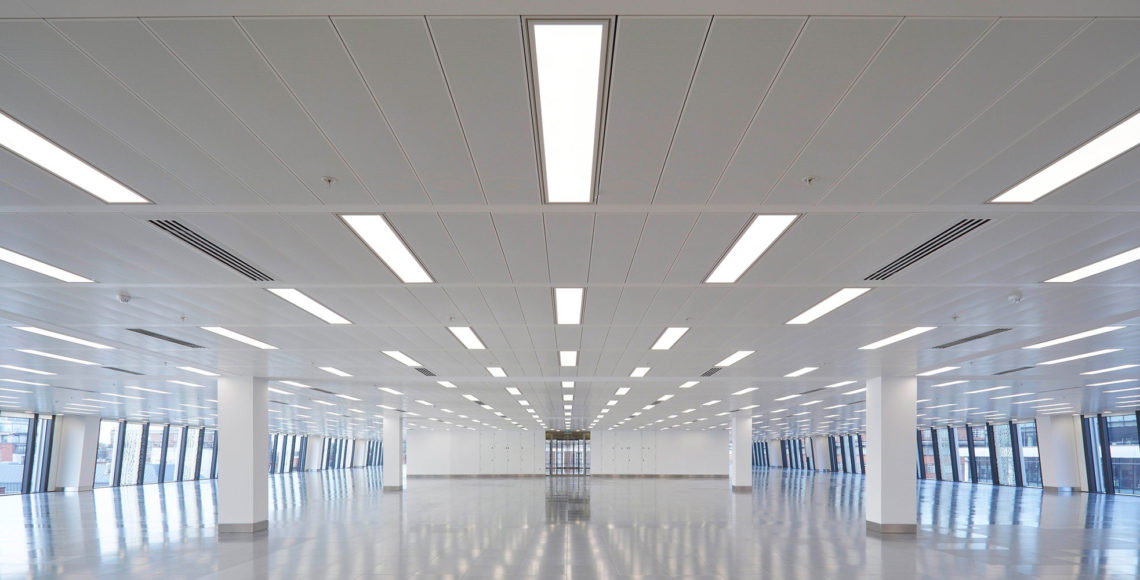Do you have those rooms in your house that are decidedly dark and dingy looking around certain areas? We’re thinking of kitchens where corners and sections of the countertops have the main ceiling lighting blocked by the cabinets above.
This can be remedied with the use of practical, compact and versatile under cabinet lighting fixtures. However, one of the major downsides to using this style of lighting, is that it requires an extensive network of wiring that, if left uncovered, can make your kitchen look rather untidy and messy.
However, there are ways to avoid this happening. By using some forethought, planning, preparation and clever designs, you can hide the wiring for those under-cabinet lighting so that it will look like areas of your kitchen or other dark rooms light up as if by magic.
Placement of the Wiring
As you read further through this article, you will see a lot of suggestions that revolve around interesting and aesthetically pleasing ways to cover over the wiring. What, though, if that’s not an option, can you still hide them?
Yes, the idea is to keep the wires affixed to the wall or surface as close to the bottom edge at the front of the cabinet as they can, using a slight overhand on the cabinet to keep them hidden.
However, if you run the wiring around the bottom edge of the cabinets at the back, they will be more easily spotted whenever you or anyone else walks into the room.
Wooden Valances
You will find some lighting fixtures tend to hang down somewhat from the underside of cabinets, which is not ideal if you are trying to keep the fixture or just the wiring hidden.
This problem can be solved by installing a wooden valance to the underside using some wood adhesive to extend the front face of the cabinet.
You can decorate this wood appropriately so that even if you don’t find the right color to match from the beginning, you can use a stain or paint to get it as close to the rest of the furniture as possible.
You then just need to use staples or tie wraps to keep the wiring securely hidden beneath the cabinet and behind the valance.
Inside the Cabinetry
If you are starting from scratch and have the benefit of foresight to plan out where the wiring is going to go, you could make necessary cuts into the cabinet where you can feed the wires so that they are hidden.
This is a great plan for recessed lighting, with the end of the light fixture penetrating the cabinet. قواعد لعبة البوكر That section will need a wooden plank placed across the top that’s exposed with a hole and channel made inside it to allow you to feed the wiring through the cabinet and into the outlet on the wall. كيف تلعب بينجو
To create a neat and tidy hole and channel you can use a router. The wooden plank can then slide into place within the cabinet’s interior. To finish you need to use a wooden plank without any openings to cover the completed construction.
Cable Protectors
We’ve left one of the simplest and quickest ways to keep unattractive and unsightly wiring for under-cabinet lighting out of the way. That is with cable protector. One way to do this is by bundling the wiring carefully and compactly into a bundle and then using tie wraps to hold it in place.
You can then stick it the underside of the cabinet using staples (being careful of course not to pierce the wiring and ruining all your hard work). The length of the wiring should be long enough to run from the lighting fixture itself to the wall outlet.
A cable protector normally takes the form of a wooden rectangle with a length the same as the bundle of secured wiring.
You can then use a router tool to cut a special groove into the wood where the bundle of wires can lie safely and securely without there being the possibility it will be pinched.
Then you finish the work by installing the cable protector over the bundle of wires on the cabinet’s underside to completely hide the wiring as if it was never there in the first place.
If the wooden cable protector does not match the color of the cabinet, you can use a suitable stain or paint to make it all look seamless. Or as close to seamless as possible.
Obviously, if you can plan your under cabinet lighting solutions at the time when you are planning your kitchen, that would be the best and easiest way to keep the wiring hidden.
However, we know that’s not always possible. لعب الروليت When it’s not the above tips are a great solution to ensure your kitchen looks as stunning as it should.








